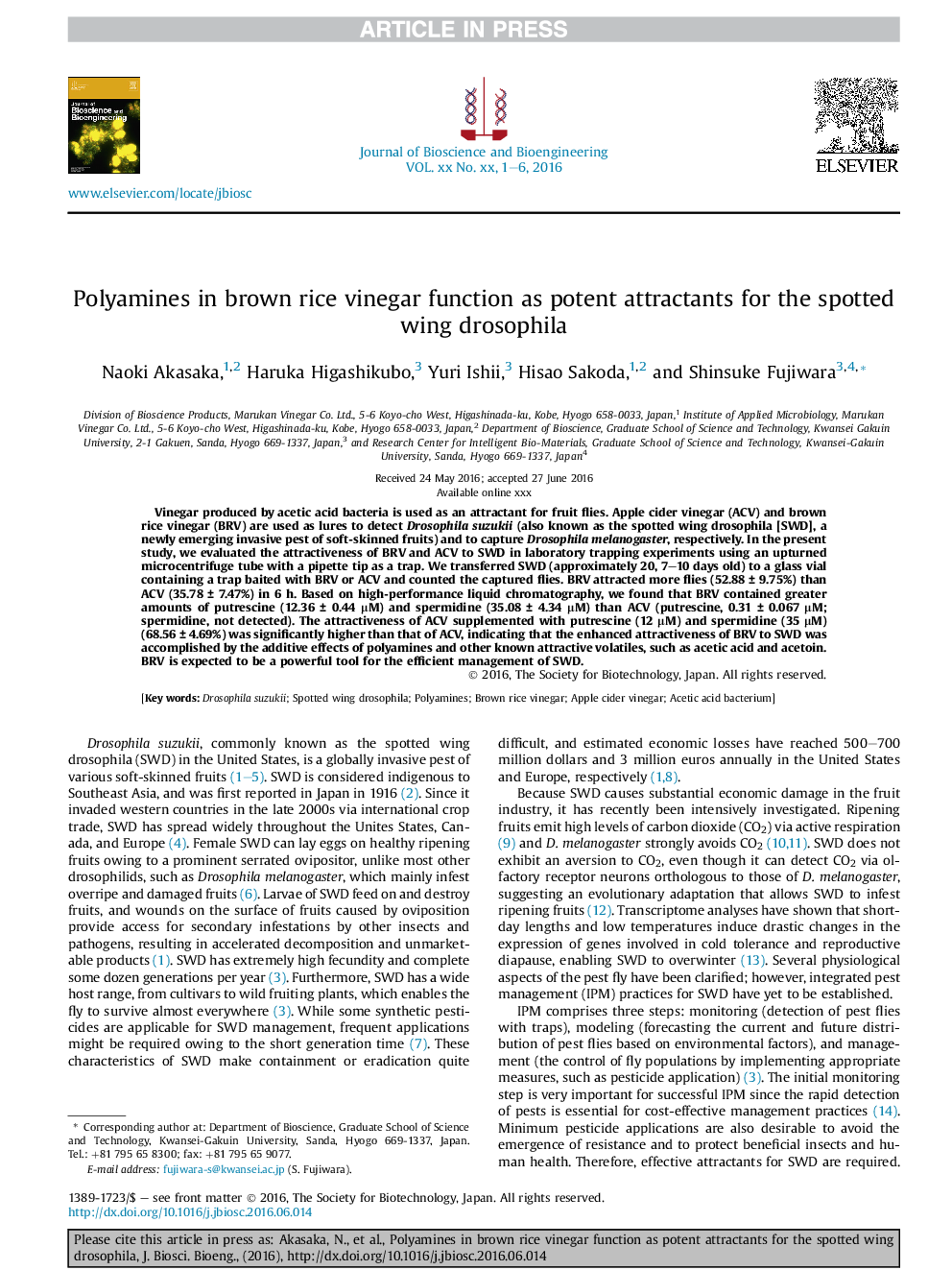| Article ID | Journal | Published Year | Pages | File Type |
|---|---|---|---|---|
| 4753452 | Journal of Bioscience and Bioengineering | 2017 | 6 Pages |
Abstract
Vinegar produced by acetic acid bacteria is used as an attractant for fruit flies. Apple cider vinegar (ACV) and brown rice vinegar (BRV) are used as lures to detect Drosophila suzukii (also known as the spotted wing drosophila [SWD], a newly emerging invasive pest of soft-skinned fruits) and to capture Drosophila melanogaster, respectively. In the present study, we evaluated the attractiveness of BRV and ACV to SWD in laboratory trapping experiments using an upturned microcentrifuge tube with a pipette tip as a trap. We transferred SWD (approximately 20, 7-10 days old) to a glass vial containing a trap baited with BRV or ACV and counted the captured flies. BRV attracted more flies (52.88 ± 9.75%) than ACV (35.78 ± 7.47%) in 6 h. Based on high-performance liquid chromatography, we found that BRV contained greater amounts of putrescine (12.36 ± 0.44 μM) and spermidine (35.08 ± 4.34 μM) than ACV (putrescine, 0.31 ± 0.067 μM; spermidine, not detected). The attractiveness of ACV supplemented with putrescine (12 μM) and spermidine (35 μM) (68.56 ± 4.69%) was significantly higher than that of ACV, indicating that the enhanced attractiveness of BRV to SWD was accomplished by the additive effects of polyamines and other known attractive volatiles, such as acetic acid and acetoin. BRV is expected to be a powerful tool for the efficient management of SWD.
Related Topics
Physical Sciences and Engineering
Chemical Engineering
Bioengineering
Authors
Naoki Akasaka, Haruka Higashikubo, Yuri Ishii, Hisao Sakoda, Shinsuke Fujiwara,
